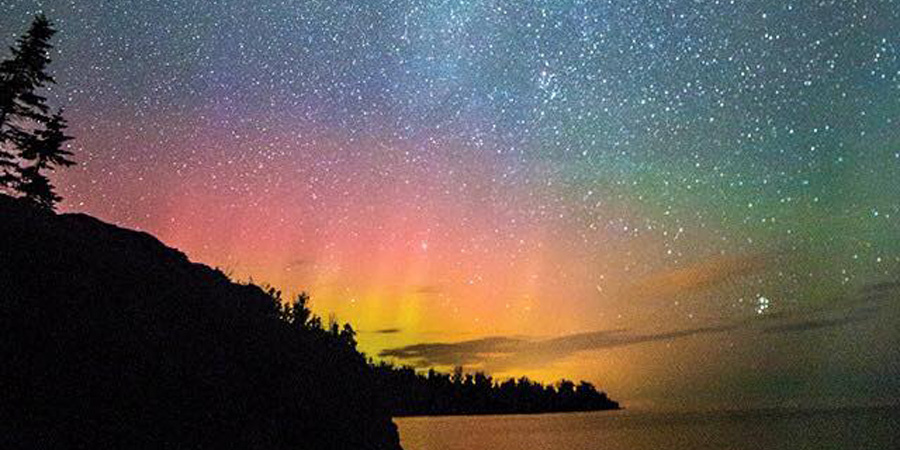CME arrival, G3 geomagnetic storm
Saturday, 15 August 2015 12:18 UTC

A coronal mass ejection arrived at our planet this morning and a strong G3 geomagnetic storm is in progress.
Weak #CME impact - Speed 465.2km/sec - IMF Bt (strength): 23.9nT. - Follow live on http://t.co/XHATH0OOfT pic.twitter.com/LWU9Yiw2SS
— SpaceWeatherLive (@_SpaceWeather_) 15 augustus 2015
The coronal mass ejection that arrived this morning came from a filament eruption that wasn't likely to hit Earth in the first place. The solar wind speed increased to 450km/sec and the direction of the IMF turned southward for more than two hours and this caused our geomagnetic field to respond with a surprise G3 geomagnetic storm. Aurora displays have been reported from dark-sky locations near the US-Canadian border, Tasmania (Australia) and southern New Zealand.
Sky watchers in northern Europe should also be alert if the current conditions hold in the hours ahead. More periods with geomagnetic storming can not be excluded but G2 or G3 geomagnetic storming does not seem likely this evening as the strength of the storm is already slowly subsiding. Scotland, Norway, Finland and most of Sweden (if skies are dark) should be alert for aurora tonight, but as mentioned before, it is vital that the geomagnetic conditions remain favourable in the coming hours.
Image: Aurora Borealis captured from Gooseberry Falls State Park (MN, USA) by Mike Lufholm.
Thank you for reading this article! Did you have any trouble with the technical terms used in this article? Our help section is the place to be where you can find in-depth articles, a FAQ and a list with common abbreviations. Still puzzled? Just post on our forum where we will help you the best we can!
Latest news
Latest forum messages
Support SpaceWeatherLive.com!
A lot of people come to SpaceWeatherLive to follow the Sun's activity or if there is aurora to be seen, but with more traffic comes higher server costs. Consider a donation if you enjoy SpaceWeatherLive so we can keep the website online!

Space weather facts
| Last X-flare | 2024/03/28 | X1.1 |
| Last M-flare | 2024/04/25 | M1.3 |
| Last geomagnetic storm | 2024/04/19 | Kp7 (G3) |
| Spotless days | |
|---|---|
| Last spotless day | 2022/06/08 |
| Monthly mean Sunspot Number | |
|---|---|
| March 2024 | 104.9 -19.8 |
| Last 30 days | 133.4 +25.6 |


